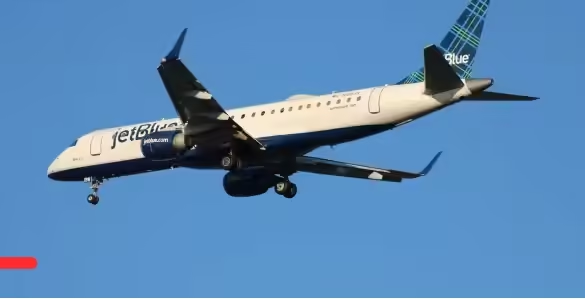
JetBlue Airways has announced plans to shift all Embraer E-190 operations from New York’s John F. Kennedy International Airport (JFK) to Boston Logan International Airport (BOS) before the aircraft are retired from their fleet. This strategic move marks a significant shift in the airline’s operational focus and fleet management strategy.
### Reasons for the Shift
1. **Fleet Modernization**: JetBlue is in the midst of a fleet modernization effort, transitioning from older, less efficient aircraft to newer models like the Airbus A220. The E-190s, while reliable, are nearing the end of their operational life within JetBlue’s fleet. Consolidating their operations in Boston simplifies the logistical challenges of maintaining and operating a shrinking sub-fleet.
2. **Operational Efficiency**: Centralizing the E-190 operations in one hub allows JetBlue to streamline its maintenance and operational processes. Boston Logan is already a significant hub for the airline, and focusing the E-190 operations there can enhance maintenance efficiency and reduce operational complexity. This shift can also lead to cost savings in terms of crew deployment and training.
3. **Strategic Network Realignment**: The shift reflects JetBlue’s broader network strategy. Boston has been a growing focus for JetBlue, with the airline increasing its presence and flight offerings there. By moving the E-190 operations to Boston, JetBlue can optimize its network to better serve its customers, particularly in the Northeast, and align its route structures with its strategic goals.
### Impact on New York (JFK)
For JFK, the departure of the E-190 operations marks a shift in JetBlue’s fleet utilization but not necessarily a reduction in service. JetBlue has been progressively introducing new aircraft, such as the Airbus A220, which are expected to replace the E-190s. These new aircraft offer better fuel efficiency, enhanced passenger comfort, and lower operational costs, which can support JetBlue’s competitive position in the highly competitive New York market.
Moreover, JetBlue’s decision to phase out the E-190s at JFK could free up valuable gate space and resources for larger aircraft. This change could enable JetBlue to increase capacity on high-demand routes and improve overall service quality.
### Impact on Boston (BOS)
For Boston Logan, the consolidation of E-190 operations signifies JetBlue’s commitment to expanding and strengthening its presence at this key hub. Boston has been a cornerstone of JetBlue’s network, and concentrating the E-190s there can enhance connectivity and provide more options for passengers traveling through Boston.
The E-190 is well-suited for regional and medium-haul routes, making it an ideal fit for many of the markets served from Boston. Passengers can expect continued service on familiar routes with the E-190 until the aircraft are fully retired and replaced by newer models. This continuity helps maintain service levels and customer satisfaction during the transition period.
### Future Outlook
Looking ahead, JetBlue’s retirement of the E-190s is part of a broader industry trend towards more fuel-efficient and technologically advanced aircraft. The Airbus A220, set to replace the E-190, offers significant advantages in terms of fuel efficiency, range, and passenger experience. This transition aligns with JetBlue’s sustainability goals and its commitment to reducing its environmental footprint.
In conclusion, the shift of Embraer E-190 operations from New York JFK to Boston Logan represents a strategic move by JetBlue to optimize its fleet, enhance operational efficiency, and support its long-term growth objectives. While the E-190s will eventually retire, their current deployment in Boston underscores JetBlue’s commitment to maintaining robust service and connectivity in the Northeast.